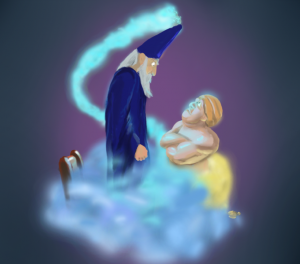OverCoat: A Journey In Between Primary and Secondary Space
By: Robert Sumner
Primary space refers to the 3D world around us in which objects live, while secondary space denotes the 2D canvas on which artists create depictions of those objects. OverCoat is a prototype digital painting system developed at Disney Research Zurich that blurs the distinction between these two concepts by generalizing the traditional 2D painting metaphor to the third dimension. Painted strokes are upgraded to the primary space using an implicit canvas concept and a stroke embedding procedure. Traditional 3D objects, on the other hand, are downgraded to play a subservient role in the embedding procedure. A hybrid rendering model provides the bridge back to the secondary space of the image. Taken together, this technology enables artists to create a new class of expressive 3D imagery while maintaining a painterly aesthetic typically restricted to 2D artwork.
In this talk, I will give a behind-the-scenes look at the design and development of OverCoat. After first showing how OverCoat builds upon other inspiring research in stroke-based rendering, I’ll present the motivating principles that guided the design of the system. Then, I’ll discuss the inherent challenges in bringing this 3D painting concept to life, and highlight the key technical advances we made in order to overcome them. Finally, I’ll show some of the most recent advances we’ve made in our prototype system.

Short Bio: Dr. Robert Sumner is the Associate Director of Disney Research Zurich and leads the lab’s research on animation and interactive graphics. His research group strives to bypass technical barriers in the animation production pipeline with new algorithms that expand the designer’s creative toolbox in terms of depiction, movement, deformation, stylization, control, and efficiency. Robert received a B.S. (1998) degree in computer science from the Georgia Institute of Technology and his M.S. (2001) and Ph.D. (2005) from the Massachusetts Institute of Technology. He spent three years as a postdoctoral researcher at ETH Zurich before joining Disney. Robert is an adjunct lecturer at ETH Zurich and teaches a course called the Game Programming Laboratory in which students work in small teams to design and implement novel video games.
